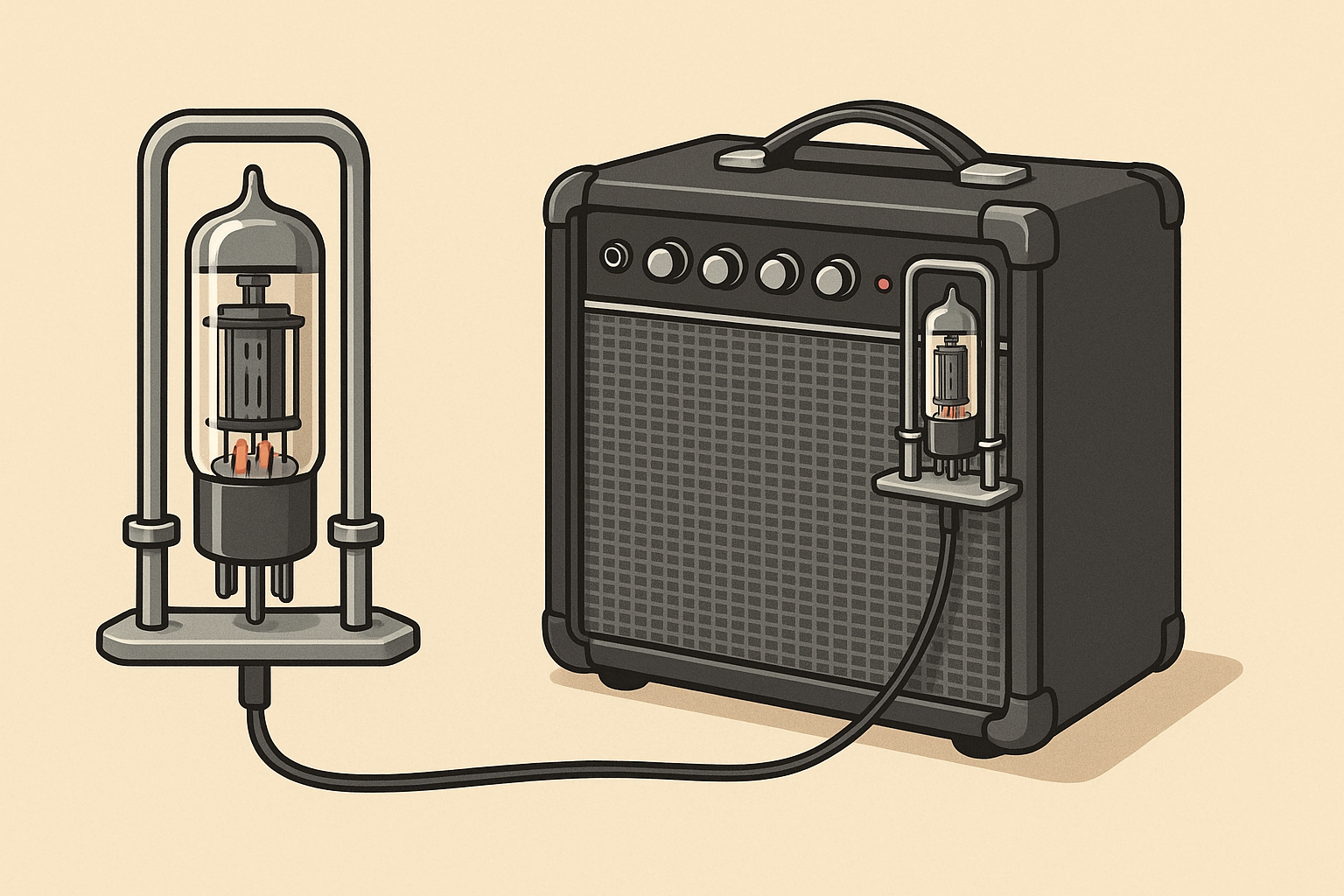Tubehalote: A Smart Upgrade for Amplifier Sound and Style

In the world of high-quality audio, music lovers and audiophiles are always in search of accessories that can improve both sound performance and visual appeal. While amplifiers and speakers often get most of the attention, smaller innovations can also have a big impact. One such innovation is the tubehalote—a simple yet powerful device designed to enhance the function of vacuum tubes in amplifiers. Not only does it refine the sound, but it also brings an elegant touch to the overall setup.
This article will explain what a tubehalote is, how it works, the benefits it offers, important things to consider before using one, and why it has become so popular among music enthusiasts.
What is a Tubehalote?
A tubehalote is a specially designed ring, usually crafted from materials like brass, copper, or aluminum, that fits around the vacuum tubes of an audio amplifier. Vacuum tubes, such as 6L6, EL-34, 12AX7, and KT-88, are highly valued for their ability to produce warm and natural sound. However, these tubes are sensitive to vibrations and movements, which can lead to microphonics—a type of unwanted noise caused by mechanical disturbances.
The tubehalote works as a stabilizer by controlling vibrations and reducing interference. With its damping properties, it provides a more controlled operating environment for the tube, which results in smoother and cleaner sound. Additionally, the design of the tubehalote gives an amplifier a stylish look, making it both a functional and decorative accessory.
How Tubehalote Improves Sound Quality
1. Reduces Microphonics
One of the main benefits of using a tubehalote is its ability to reduce microphonic noise. Microphonics often sound like faint ringing, buzzing, or distortion, particularly at high volumes. By holding the tubes steady, the tubehalote helps minimize these vibrations, delivering clearer and more stable sound.
2. Improves Tonal Balance
The addition of a tubehalote slightly changes the resonance and mass of the tube. This subtle adjustment can enhance tonal balance by smoothing out the midrange, tightening bass response, and making treble details more precise. These refinements are especially appreciated by audiophiles who want more control over their sound without altering the actual electronics of the amplifier.
3. Enhances Clarity and Detail
When vibration is reduced, the amplifier reveals more sonic detail. Vocals become sharper, instruments more defined, and background elements more noticeable. This increased clarity allows the listener to experience music closer to how it was originally recorded.
Aesthetic Benefits of Tubehalote
Besides its technical role, the tubehalote also adds beauty to any amplifier. Available in polished finishes such as chrome, anodized aluminum, or brass, these rings enhance the visual appeal of both modern and vintage amplifiers. For many enthusiasts, a stylish setup is just as important as the sound itself, and the tubehalote fulfills this dual purpose.
Things to Consider Before Using a Tubehalote
While the tubehalote offers clear benefits, buyers should pay attention to a few key factors:
-
Compatibility
Not every tubehalote fits all types of tubes. It is important to check compatibility with your amplifier’s specific tube models. Some versions are adjustable, while others are designed for particular tube sizes. -
Heat Management
Vacuum tubes generate a lot of heat. A good tubehalote should not block heat dissipation, as overheating can shorten tube lifespan or affect performance. High-quality models are engineered to allow proper airflow. -
Installation
Installing a tubehalote is generally simple, but it should be done carefully. Forcing it onto the tube may cause damage. Instead, it should be gently placed around the tube to ensure stability without stress. -
Cost vs. Value
Prices vary depending on the material and design. While many users find the improvements worth the investment, the final decision should depend on personal listening preferences and budget.
Who Should Use a Tubehalote?
-
Audiophiles – For those seeking the cleanest and most accurate sound possible, a tubehalote is an excellent upgrade.
-
Vintage Amplifier Owners – Helps preserve older, delicate tubes while adding style to classic equipment.
-
Musicians and Sound Engineers – Useful in live performances and studio recordings where sound clarity and noise reduction are essential.
Conclusion
The tubehalote is a small but meaningful accessory that combines function and beauty. By reducing microphonics, improving tonal balance, and enhancing clarity, it significantly upgrades the listening experience. At the same time, its polished designs make amplifiers look more impressive and stylish.
However, before purchasing one, users should ensure compatibility with their tubes, confirm that heat dissipation is not compromised, and weigh the cost against the expected benefits. When used properly, the tubehalote can take your audio system to the next level, making it an excellent choice for music lovers, collectors, and professionals alike.
FAQs About Tubehalote
Q1. What is the purpose of a tubehalote?
A tubehalote reduces vibrations in vacuum tubes, preventing microphonic noise and improving sound quality.
Q2. Does a tubehalote change the sound of my amplifier?
Yes, it can subtly alter tonal balance, providing clearer mids, tighter bass, and more defined treble.
Q3. Can a tubehalote damage my amplifier?
No, if installed correctly. It should be placed gently to avoid putting stress on the tube or socket.
Q4. Do all amplifiers need a tubehalote?
Not necessarily. While some users notice significant improvements, others may find the difference subtle. Testing in your setup is the best way to know.
Q5. Is the tubehalote mainly for sound or looks?
It is designed for both. It improves sound performance while also enhancing the amplifier’s aesthetic appeal.
Read also:Tiwzozmix458: Unraveling the Mystery Behind the Digital Alias



